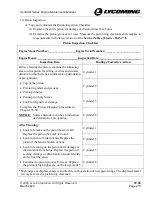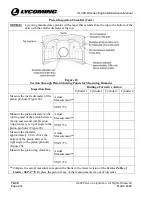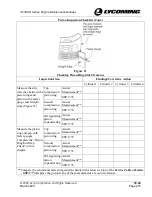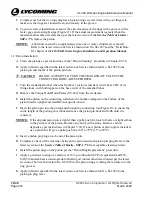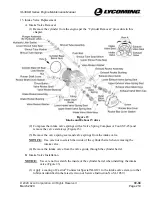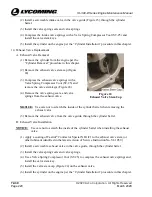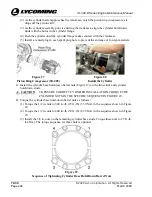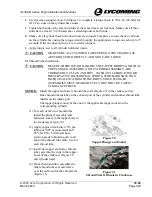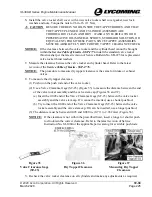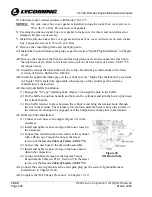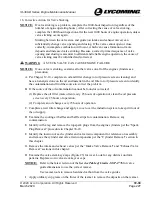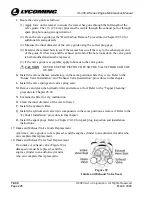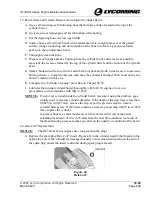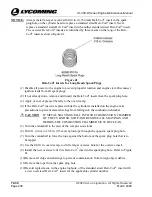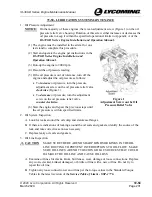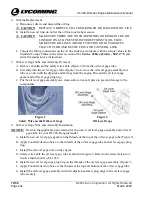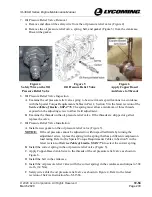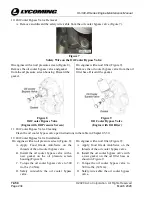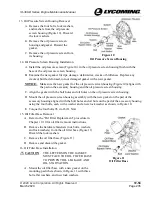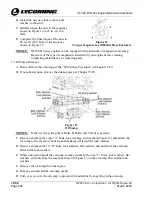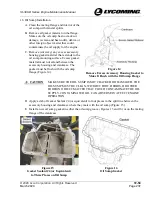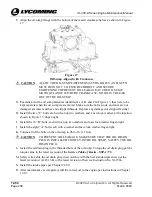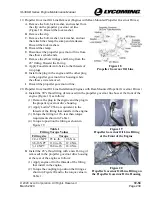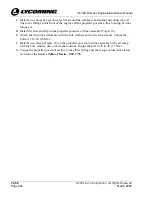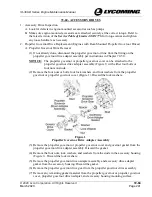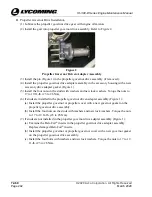
IO-390-D Series Engine Maintenance Manual
© 2020 Avco Corporation. All Rights Reserved
72-30
March 2020
Page 227
IO-390-D Series Engine Maintenance Manual
16.
Corrective Action for Valve Sticking
NOTICE:
If valve sticking is a problem, complete the 1000-hour inspection (regardless of the
number of engine operating hours). After correcting the cause of valve sticking,
complete the 1000-hour inspection after the next 1000 hours of engine operation, unless
valve sticking occurs again.
Sticking between the valve stem and guide (on intake and exhaust valves) can
substantially change valve opening and closing. If the valve cannot open or close
correctly, incomplete combustion will occur, which can cause formation of more
deposits and increased valve sticking. Because a correctly-timed sequence of valve
opening and closing is essential to efficient and reliable engine operation, the cause of
valve sticking must be identified and corrected.
WARNING
A STUCK VALVE CAN CAUSE ENGINE FAILURE.
NOTICE:
If one valve is sticking, examine all other valves on all of the engine cylinders as a
precaution.
A.
Per Chapter 12-10, complete an oil and filter change (or oil pressure screen cleaning) and
have an analysis done on the oil and material in the oil filter or oil pressure screen to identify
the contamination and find the source to correct the problem.
B.
If the source of the oil contamination cannot be found or corrected:
(1)
Replace the oil filter (more often) every 25 hours of operation or clean the oil pressure
screen every 25 hours of operation.
(2)
Complete an oil change every 25 hours of operation.
C.
Complete an air filter change and apply a cover over the induction system to keep dirt out of
the oil supply.
D.
Examine the cooling air baffles and baffle strips for contamination. Remove any
contamination.
E.
Identify with a tag and remove the top spark plugs from the engine cylinders per the “Spark
Plug Removal” procedure in Chapter 74-20.
F.
Identify the location of each cylinder and valve train component for reference on assembly
and remove the cylinder and valve train components per the “Cylinder Removal” section in
this chapter.
G.
Remove the intake and exhaust valves per the “Intake Valve Removal” and “Exhaust Valve
Removal” sections in this chapter.
H.
Examine the valve stem keys/caps (Figure 23) for wear. Look for any distinct, uniform
patterns. Replace worn valve stem keys or caps.
NOTICE:
Refer to the latest revision of the
Service Table of Limits - SSP-1776
for valve
guide dimensions to use the correct reamer.
Use reamer tools to remove hardened carbon from the valve guides.
I.
Apply ordinary cup grease on the flutes of the reamer to remove the deposits on the reamer.

